lumiprobe荧光染料42020 Cyanine3.5 NHS ester 25 mg lumiprobe荧光染料Cyanine3.5 羧基活性酯 25 mg 410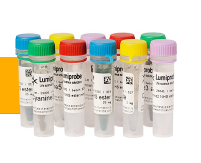
作者归档:Kanto
Pall颇尔滤膜 MAPM02C68 SPIN FILTER 0.2UM 20ML 100PK
Pall颇尔滤膜 MAPM02C68 SPIN FILTER 0.2UM 20ML 100PK 1229 9828
Whatman 滤膜 10312270 GR 598 25mmx100M
Whatman 滤膜 10312270 GR 598 25mmx100M GR 598 25mmx100M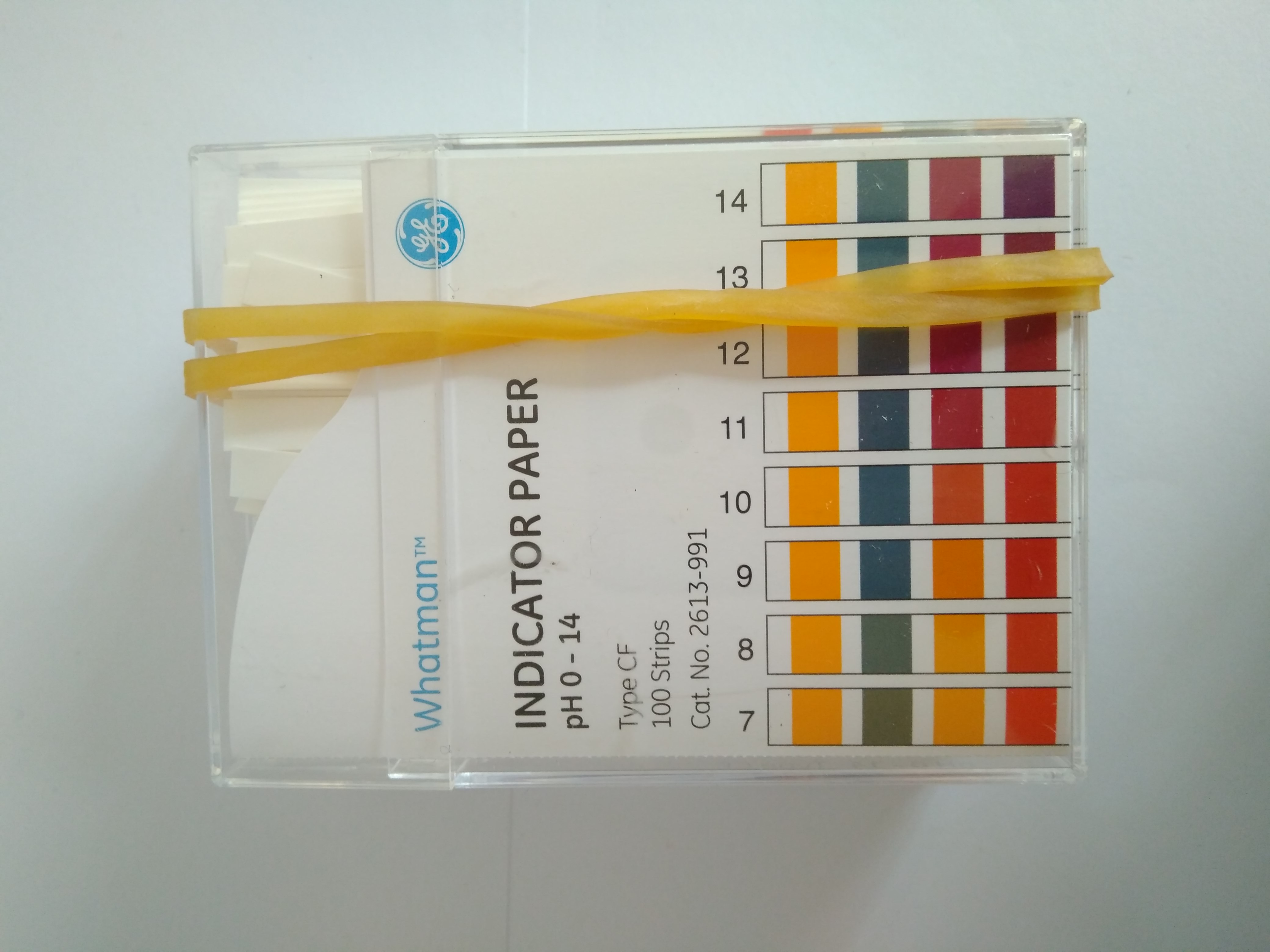
Hampton 银弹 Silver Bullets
Hampton 银弹 Silver Bullets
| Additive screen for the optimization of protein crystals |
| For use with soluble proteins and membrane proteins |
| Additive screen to discover different crystal forms |
| Secondary or orthogonal crystallization screen when traditional screens are not successful |
| Additive screen for the optimization of protein solubility and stability |
| Developed at Hampton Research | |||||||
Screens a portfolio of small molecules and excipients for their ability to establish stabilizing, intermolecular, hydrogen bonding, hydrophobic and electrostatic interactions which could promote lattice formation and crystallization
|
Description
Silver Bullets screens a portfolio of small molecules for their ability to establish stabilizing, inter molecular, hydrogen bonding, hydrophobic and electrostatic interactions which could promote stability, lattice formation, and crystallization.1-3
Published results with the Silver Bullets have been very encouraging, with more than twice as many proteins being crystallized overall as were crystallized from controls free of any small molecules.1-3
X-ray diffraction analysis has revealed the small molecule Silver Bullets in the crystal lattice, involved at the centers of hydrogen bonding networks and electrostatic interaction.1-3 Silver Bullets is compatible with hanging, sitting and sandwich drop vapor diffusion, microbatch, free interface, and microdialysis crystallization methods. Silver Bullets can be used with Dynamic Light Scattering (DLS), ThermoFluor, and Size Exclusion Chromatography assays.
Silver Bullets reagent portfolio
•Organic salts and acids
•Biologically active small molecules
•Amino acids and peptides
•Macromolecular digests
The Silver Bullets kit is a library of small molecules that have been shown to promote crystal lattice formation. X-ray diffraction analysis has demonstrated the reagents have the ability to:
•Stabilize the conformation of the protein
•Perturb the interaction of the protein with the solvent
•Participate in forming important lattice contacts
•Build the crystal lattice by forming reversible cross-links between the macromolecules in the crystal
The Silver Bullets kit is composed of 96 solutions in a single Deep Well block (Greiner 786261 block specifications: Total Volume: 0.5 mL Working Volume: 0.03 – 0.7 mL at Room Temperature 0.03 – 0.55 mL at -20ºC, Well Profile: Conical (V), Bottom Well Bottom: Solid, Plate Color: Translucent), HT format.
Each Silver Bullets reagent is a mixture of small molecules or macromolecular digests in 0.02 M HEPES sodium pH 6.8 buffer. Each solution contains between 2 and 20 small molecules.
Silver Bullets reagent volume is 0.5 ml (each well).
ThermoFluor is a registered trademark of Johnson & Johnson.
Hampton Silver Bullets Bio
Silver Bullets • Silver Bullets Bio

上海金畔生物作为Hampton蛋白结晶产品的代理商,竭诚为您服务,欢迎新老客户咨询。
Applications 应用
| Additive screen for the optimization of protein crystals |
| For use with soluble proteins and membrane proteins |
| Additive screen to discover different crystal forms |
| Secondary or orthogonal crystallization screen when traditional screens are not successful |
| Additive screen for the optimization of protein solubility and stability |
Features
Screens a portfolio of small molecules and excipients for their ability to establish stabilizing, intermolecular, hydrogen bonding, hydrophobic and electrostatic interactions which could promote lattice formation and crystallization
|
|||||||
| Developed at Hampton Research | |||||||
| Two sets of 96 reagents, composed of more than 1,090 chemicals, of which more than 400 are uniqu |
Please note, the Silver Bullets Bio Screen is temporarily unavailable as a new formulation is in development
nunc 337516 CRYOTUBE 4,5ML SI EXT,STARFOOT,ROUND 可立冻存管,已灭菌,4.5ml,书写区
nunc 337516 CRYOTUBE 4,5ML SI EXT,STARFOOT,ROUND 可立冻存管,已灭菌,4.5ml,书写区
Whatman 滤膜 10404112 AE99膜 圆型, 醋酸纤维素,8m, 47mm 100/盒
Whatman 滤膜 10404112 AE99膜 圆型, 醋酸纤维素,8m, 47mm 100/盒 OE66 0.2uM 47MM 100/PK
Whatman 滤膜 29168172 597 1/2 Folded Filters, 185 mm – PROMO
Whatman 滤膜 29168172 597 1/2 Folded Filters, 185 mm – PROMO 597 1/2 Folded Filters, 185 mm – PROMO
OXOID培养基 SR0186E 万古霉素添加剂 VANCOMYCIN SUPPLEMENT
OXOID培养基 SR0186E 万古霉素添加剂 VANCOMYCIN SUPPLEMENT 468.120408336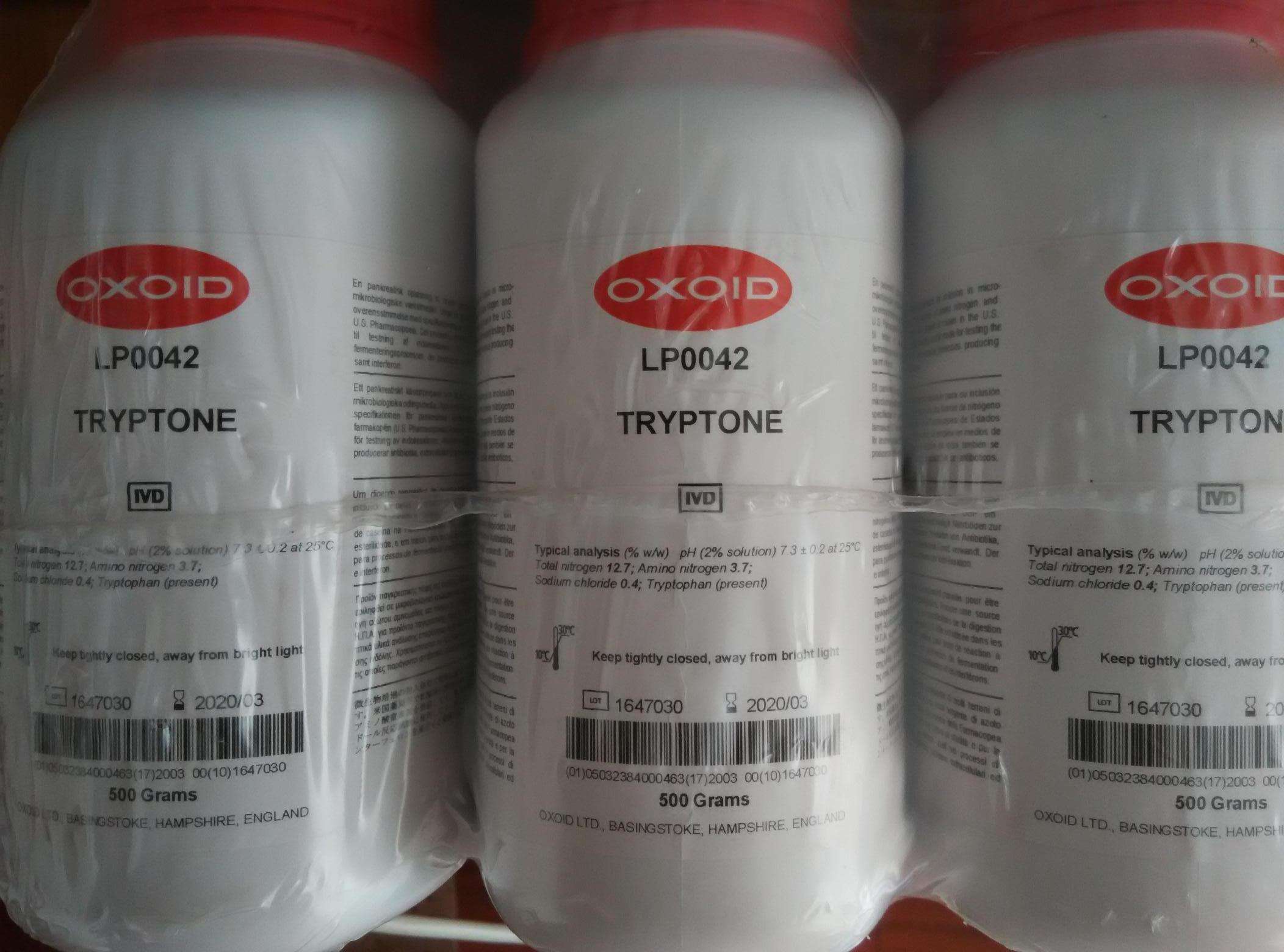
K-ACHDF 可吸收糖/膳食纤维检测试剂盒 酒精沉淀法测定膳食纤维
Megazyme检测试剂盒-现货
| K-ACHDF | 可吸收糖/膳食纤维检测试剂盒 | 酒精沉淀法测定膳食纤维 |
◆ 检测试剂盒
◆ 酶
◆ 酶底物
◆ 碳水化合物
◆ 化学品/仪器

鹿genius®分子疫学分析POT配套元件(绿脓菌用)|分子疫学分析POT套件|生化学试剂-基因工程|试剂|关东化学株式会社

约4小时的分子疫学分析可能
脉冲电场凝胶电泳(PFGE)不同的通用设备测定可能
解析结果数值化(POT值)的事,菌体间的相比较可能同性
配套元件的构成
操作步骤

电泳模式
产品信息
的相关产品
POT套件·PCR套件
分离培养基
电泳相关
250 |
||
宣传手册、说明书(PDF)
计算表(ZIP文件,Excel)
的相关产品
该文章由WP-AutoPost插件自动采集发布
荧光染料F1030 Cyanine3 azide 100 mg
lumiprobe荧光染料F1030 Cyanine3 azide 100 mg lumiprobe荧光染料Cyanine3 叠氮基 100 mg 1190
WHATMAN 纤维素 DE-52 4057-050
4057-050 WHATMAN DEAE纤维素填料 DE-52 4057-050,4057-050-WHATMAN DEAE纤维素填料DE-52 4057-050
WHATMAN 纤维素 DE-52 4057-050
WHATMAN纤维素DE-52 4057-050
阴离子交换纤维素:
DE弱(带电量依赖于pH值)阴离子交换剂,基于二乙胺乙基(DEAE)的叔胺功能基团。QA52是强(带电量不依赖于pH值)阴离子交换介质,包含有季胺基团。
DE23 干纤维状DEAE纤维素
高流速,特别是在去除细粉后流速加快,非常适合负电荷生物聚合物
DE32 干微粒状DEAE纤维素
预循环处理后与DE52有类似的性能
DE52预溶胀微粒状DEAE纤维素
世界上使用最广泛的DEAE纤维素,用于带有低至高负电荷的生物聚合物,高流速,高分辨率
DE53预溶胀微粒状DEAE纤维素
部分季铵化的DEAE阴离子交换剂,比DE52有更高的结合力,可以与DE52 同时使用
QA52预溶胀微粒状QA纤维素
强碱性、季胺化阴离子交换介质,功能团适度替换,具有很高的蛋白结合力。完全离子化,在所有pH条件下保持电荷量不变,在高pH条件下的应用表现卓越
EXPRESS-ION 高流速离子交换填料,有单独描述。 离子交换纤维素还有层析纸的形式
阳离子交换纤维素:
CM23 干纤维状羟甲基纤维素
均一,极高流速,特别是在去除细粉之后。表现出很高的带有正电荷蛋白和生物聚合物的结合能力
CM32干微粒状羟甲基纤维素
对于带有低至高正电荷的蛋白、激素、多肽和其他生物聚合物,结合力很高;分辨率高,柱流速快,需要预循环进行溶胀,溶胀后与CM52相同
CM52预溶胀微粒状羟甲基纤维素
对于带有低至高正电荷的蛋白、激素、多肽和其他生物聚合物,结合力很高;分辨率高,柱流速快
P11干纤维状磷酸纤维素
干纤维,推荐用于柱分离
Whatman 滤膜 WB129206 FTA CARD 100/PK
Whatman 滤膜 WB129206 FTA CARD 100/PK FTA CARD 100/PK
Research Diets 动物疾病造模饲料 S10026 DIO Series Mineral Mix 添加矿物质 12.5kg
Research Diets 动物疾病造模饲料 S10026 DIO Series Mineral Mix 添加矿物质 12.5kg Mineral Mix for DIO Series Diets Use at 10 gm/kg diet or 10 gm/ 4000 kcal digestible energy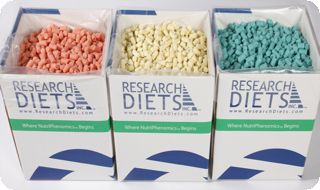
NUNC 165305 96 WELL OBP BLACK POLYMER BOTTOM CC 96孔底透微孔板,细胞培养,黑色,
NUNC 165305 96 WELL OBP BLACK POLYMER BOTTOM CC 96孔底透微孔板,细胞培养,黑色,
harlan teklad官网动物饲料 兔子 猪 几内亚猪 仓鼠、沙土鼠 TD.92033猪日粮
兔子不容易食用纯饲料。当需要特殊的营养控制时,建议混合日粮或至少包括一些苜蓿粉。联系我们的公式例子或讨论您的具体需要。
几内亚猪不容易食用纯化的饲料,因此,当需要特殊的营养控制时,建议混合饮食(精制和天然成分的混合物)。至少在饮食中保留一些苜蓿粉是明智的。请与我们联系以获得更多信息。
Rabbit
Rabbits do not readily consume purified diet. When specific nutrient manipulations are necessary, hybrid diets or at least some alfalfa meal inclusion is recommended. Contact us for formula examples or to discuss your specific needs.
- TD.92033 Swine diet (15% lard, 1.2% cholesterol)
- TD.92052 Swine diet (15% lard, 1.5% cholesterol)
- TD.93296 Swine diet (15% lard, two perecent cholesterol)
We recommend these diets in meal/powder form, as pellets are not very durable. Other natural ingredient and purified diets with various nutrient manipulations are available. Contact us for further information.
Guinea pigs do not readily consume purified diets, so when specific nutrient manipulations are necessary, hybrid diets (mixture of refined and natural ingredients) are recommended. At the very least it is advisable to retain some alfalfa meal in the diet. Contact us for further information.
Whatman 滤膜 1827-866 934AH玻璃微纤维滤纸方形8x10inch/100
Whatman 滤膜 1827-866 934AH玻璃微纤维滤纸方形8x10inch/100 934-AH 8x10IN 100/PK
Axygen试剂盒 AP-MX-BL-GDNA-25G AxyPrep 血基因组DNA大量制备试剂盒
Axygen试剂盒 AP-MX-BL-GDNA-25G AxyPrep 血基因组DNA大量制备试剂盒 25 prep 盒 1334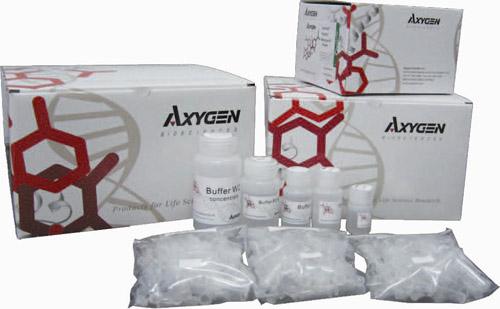
Whatman 滤膜 5305-110 305 11CM 100/PK
Whatman 滤膜 5305-110 305 11CM 100/PK 305 11CM 100/PK
Whatman 滤膜 GN203APEAQU MUP G2 AMB 0.2uM PVDF 100/PK
Whatman 滤膜 GN203APEAQU MUP G2 AMB 0.2uM PVDF 100/PK MUP G2 AMB 0.2uM PVDF 100/PK
甲氧基聚乙二醇-马来酰亚胺 mPEG-MAL
上海金畔生物科技有限公司提供甲氧基聚乙二醇-马来酰亚胺 mPEG-MAL
甲氧基聚乙二醇-马来酰亚胺CAS号:
mPEG-MAL

|
厂商货号
|
分子量
(PEG原料) |
端基取代率
|
分散性
(PEG原料之PD) |
|
mPEG-MAL-2K
|
2000±200
|
≥95%
|
≤1.05
|
|
mPEG-MAL-3.4K*
|
3400±340
|
≥95%
|
≤1.05
|
|
mPEG-MAL-5K
|
5000±500
|
≥95%
|
≤1.05
|
|
mPEG-MAL-10K
|
10000±1000
|
≥90%
|
≤1.06
|
|
mPEG-MAL-20K
|
20000±2000
|
≥90%
|
≤1.08
|
|
mPEG-MAL-30K
|
30000±3000
|
≥90%
|
≤1.08
|
|
mPEG-MAL-40K*
|
40000±4000
|
≥90%
|
≤1.08
|
更多产品,更多优惠,请联系我们!
上海金畔生物科技有限公司
固话总机:021-50837765
订货热线:15221999938
qq号:2743691513
网 址: www.jinpanbio.com
金畔博客:www.jinpanbio.cn
Email:sales@jinpanbio.com
BD培养基 215620 500 g EA Difco Lactose Monohydrate 乳糖,500G
BD培养基 215620 500 g EA Difco Lactose Monohydrate 乳糖,500G 
Whatman 滤膜 1002-110 2号滤纸圆型110mm/100
Whatman 滤膜 1002-110 2号滤纸圆型110mm/100 GR 2 11.0CM 100/PK
康宁corning 3989 PLATE,96WL,STRIPWELL,1X8,OSTEO 1/包
康宁corning 3989 PLATE,96WL,STRIPWELL,1X8,OSTEO 1/包 2包/箱 4966.72
色谱法|试剂|关东化学株式会社
该文章由WP-AutoPost插件自动采集发布
NISSUI 日本日水培养基 Compact Dry
BD培养基 233120 500 g EA Difco MacConkey Agar without Salt 麦康凯琼脂W/O盐
BD培养基 233120 500 g EA Difco MacConkey Agar without Salt 麦康凯琼脂W/O盐 
Amresco 0227-12KG SODIUM DODECYL SULFATE 十二烷基硫酸钠
Amresco 0227-12KG SODIUM DODECYL SULFATE 十二烷基硫酸钠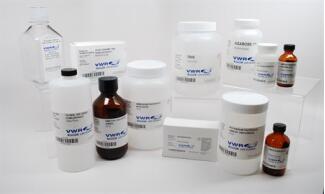
Whatman 滤膜 29024898 PURADISC25/0.45PP(DP)200/PK PR
Whatman 滤膜 29024898 PURADISC25/0.45PP(DP)200/PK PR PURADISC25/0.45PP(DP)200/PK PR
Whatman 滤膜 1441-185 41号滤纸 圆型185mm/100
Whatman 滤膜 1441-185 41号滤纸 圆型185mm/100 GR 41 18.5CM 100/PK
Nunc 377224-Bag 1.0mL细胞冻存管 带硅胶垫圈 内旋盖 星形脚 500个/盒
Nunc 377224-Bag 1.0mL细胞冻存管 带硅胶垫圈 内旋盖 星形脚 500个/盒
BD培养基 239520 500 g EA Difco Malonate Broth 丙二酸盐肉汤
BD培养基 239520 500 g EA Difco Malonate Broth 丙二酸盐肉汤 
温控循环机吉恩阿特拉斯482 |聚合酶链反应装置|生化学相关设备|试剂|关东化学株式会社

特长
规格
消耗品

小册子(PDF)
的相关产品
该文章由WP-AutoPost插件自动采集发布
Amresco 0436-5G CRESOL RED, FREE ACID 甲酚红
Amresco 0436-5G CRESOL RED, FREE ACID 甲酚红
鹿genius®核酸精制套件系列selection导游|核酸精制试剂|生化学试剂-基因工程|试剂|关东化学株式会社

無線
小册子(PDF)
的相关产品
该文章由WP-AutoPost插件自动采集发布
Pall颇尔玻璃纤维素滤膜
Pall颇尔玻璃纤维素滤膜
美国pall滤膜 玻璃纤维素滤膜 A/B膜

.A/E类满足悬浮固体测试要求,见《 水、废水检测的标准方法》 。
.过滤难以过滤或高污染溶液时,可减少过滤成本和过早堵塞。
.延长过滤器寿命,使和大容量预滤器,更换终滤器较少。
.消除样品污染。无粘结剂硼硅玻璃纤维无额外萃取物。
.可选择不同过滤器厚度来过滤众多粘性和多颗粒溶液。
.良好的湿强度确保操作简便和过滤器完整性
用于众多样品洗涤、预过滤和分析性测试场合。可选择无粘结剂的硼硅玻璃,或带有丙烯酸粘结剂的玻璃纤维。
A/E类玻璃纤维
.用于测试废水中的溶解和悬浮固体,以及空气污染物的重力分析;
.流速、湿强度、纳污(固体)能力局;
A/B筹波璃穿维
.玻璃厚度是A/C类的2.5 倍,纳污能力高。
.由最好质量的硼硅玻璃微纤维制造而成。
A/C群淤璃纤维
.用于测试废水中的溶解和悬浮固体。
. 254μm(l0mils)厚度有利于细胞收集场合。
.纯净消除了有害污染物侵入滤液的危险。
A/D类玻璃纤维
.用于过滤大颗粒物较多的溶液的良好预过滤器。
.标称孔径(3μm)大,可减少膜堵塞。
如厚玻璃纤醒
.特别适合对粘性生物溶液进行预过滤。
.颗粒保持能力高,使盘式过滤器成为高效的深度过滤器,可过滤大量溶液。
Metrigard™ 玻璃纤维
.有利于延长颗粒物质很多的液体系统中膜过滤器的寿命。
|
产品编号
|
说明
|
包装
|
|
65475
|
2.5mm
|
100片/包装
|
|
61628
|
13mm
|
500片/包装
|
|
61630
|
25mm
|
500片/包装
|
|
60097
|
30mm
|
100片/包装
|
|
61654
|
35mm
|
100片/包装
|
|
61652
|
37mm
|
500片/包装
|
|
61631
|
47mm
|
100片/包装
|
|
61632
|
50mm
|
100片/包装
|
|
60140
|
55mm
|
100片/包装
|
|
60012
|
57mm
|
100片/包装
|
|
60150
|
63mm
|
100片/包装
|
|
61665
|
70mm
|
100片/包装
|
|
61663
|
76mm
|
100片/包装
|
|
60010
|
81mm
|
100片/包装
|
|
60127
|
82.5mm
|
100片/包装
|
|
60118
|
85mm
|
100片/包装
|
|
61664
|
90mm
|
100片/包装
|
|
61633
|
102mm
|
100片/包装
|
|
60115
|
110mm
|
100片/包装
|
|
61655
|
124mm
|
100片/包装
|
|
61669
|
127mm
|
100片/包装
|
|
66559
|
142mm
|
25片/包装
|
|
61635
|
142mm
|
100片/包装
|
|
61675
|
257mm
|
100片/包装
|
|
61636
|
265mm
|
100片/包装
|
|
66560
|
293mm
|
25片/包装
|
|
61637
|
293mm
|
100片/包装
|
|
61638
|
8x10in.
|
100片/包装
|
|
产品编号
|
说明
|
包装
|
|
66196
|
13mm
|
100片/包装
|
|
66198
|
25 mm
|
100片/包装
|
|
66208
|
37 mm
|
100片/包装
|
|
66209
|
47 mm
|
100片/包装
|
|
66210
|
142 mm
|
25片/包装
|
|
66211
|
8x10in.
|
25片/包装
|
|
产品编号
|
说明
|
包装
|
|
66213
|
25 mm
|
100片/包装
|
|
66214
|
37 mm
|
100片/包装
|
|
66215
|
47 mm
|
100片/包装
|
|
65529
|
70 mm
|
100片/包装
|
|
66216
|
142 mm
|
25片/包装
|
|
66217
|
8x10in.
|
25片/包装
|
|
产品编号
|
说明
|
包装
|
|
66218
|
13 mm
|
100片/包装
|
|
66220
|
25 mm
|
100片/包装
|
|
66222
|
37 mm
|
100片/包装
|
|
66224
|
47 mm
|
100片/包装
|
|
66226
|
142 mm
|
25片/包装
|
|
66227
|
8x10in.
|
25片/包装
|
|
产品编号
|
说明
|
包装
|
|
66073
|
13 mm
|
100片/包装
|
|
66075
|
25 mm
|
100片/包装
|
|
66078
|
47 mm
|
100片/包装
|
|
66084
|
127 mm
|
50片/包装
|
|
66085
|
142 mm
|
50片/包装
|
|
66086
|
257 mm
|
25片/包装
|
|
66088
|
293 mm
|
25片/包装
|
|
产品编号
|
说明
|
包装
|
|
64798
|
47mm
|
100片/包装
|
|
64803
|
142mm
|
100片/包装
|
金属混合标准液|一般分析用标准品|标准物质·标准品|试剂|关东化学株式会社
金属类混合标准液
ICP掺合准液更多
该文章由WP-AutoPost插件自动采集发布
合成·反应装置ケミスト广场CPP – 2000系列用1 / 8用插芯10组入|柴田科技有限公司-环境检测设备、科学仪器的制造销售
产品详细
商品代码其他情报(式样)
| |
||
|---|---|---|
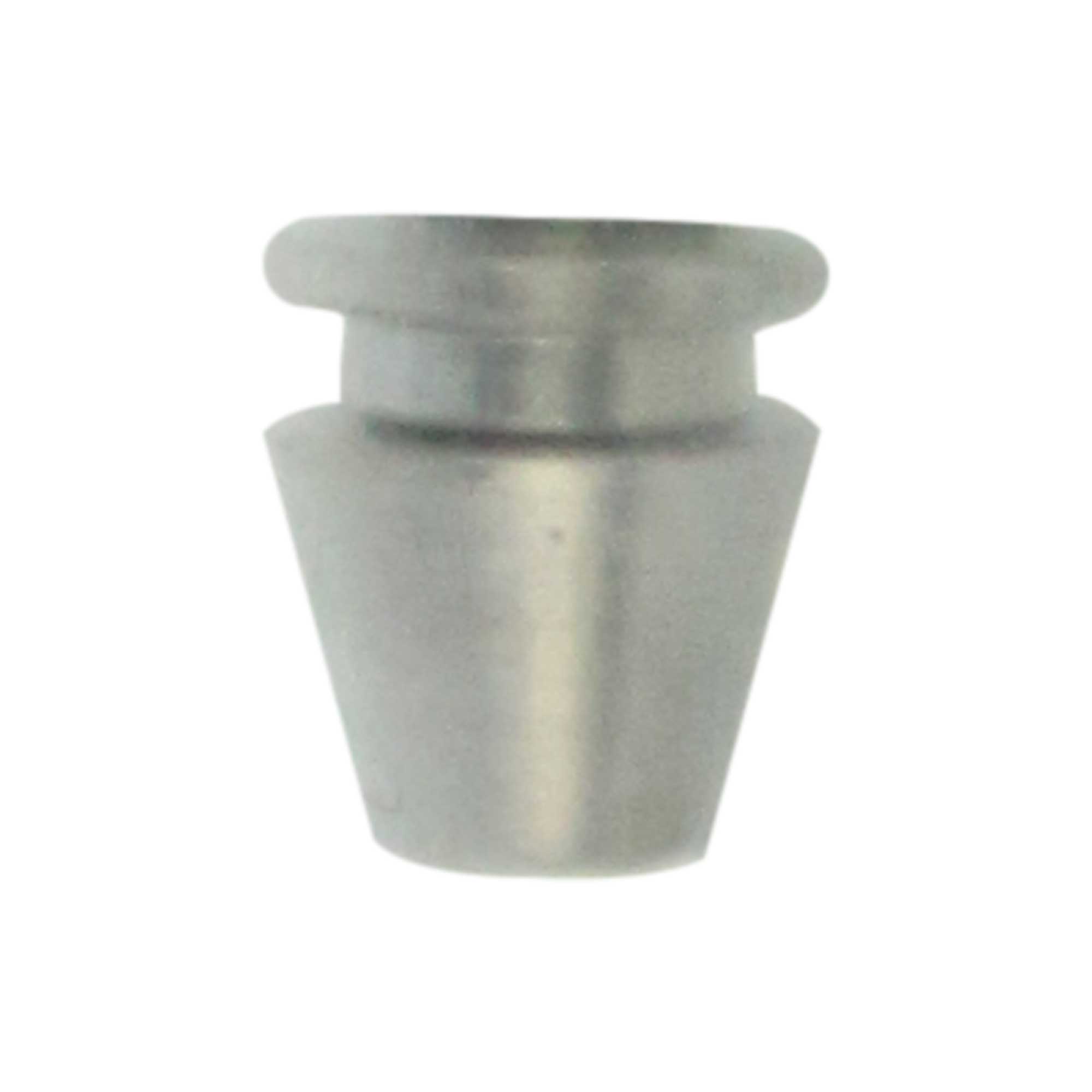 |
||
上海金畔生物科技有限公司
674%2F%3Fc%3D34& ” 674%2F%3Fc%3D34&
Wako(和光纯药)标准品 氨基酸分析用标准品
Wako(和光纯药)标准品 氨基酸分析用标准品
货号 名称 规格
167-08761 PTH-DL-Valine Standard 100mg
160-08991 PTH-DL-Tryptophan Standard 100mg
162-08691 PTH-L-Tyrosine Standard 100mg
167-09001 PTH-delta-threonine Standard 100mg
166-08971 PTH-DL-Threonine Standard 100mg
169-08961 PTH-DL-Serine Standard 100mg
160-08751 PTH-L-Proline Standard 100mg
163-08741 PTH-L-Phenylalanine Standard 100mg
166-08731 PTH-DL-Norvaline Standard 100mg
169-08721 PTH-DL-Norleucine Standard 100mg
161-08801 PTH-DL-Methionine Standard 100mg
161-08781 PTH-L-Lysine Standard 100mg
165-08681 PTH-L-Leucine Standard 100mg
164-08771 PTH-DL-Isoleucine Standard 100mg
168-08791 PTH-L-Histidine Hydrochloride Standard?PTH-L-组氨酸盐酸盐标准品 100mg
168-08671 PTH-glycine Standard 100mg
165-08701 PTH-L-Glutamine Standard 100mg
166-08851 PTH-L-Glutamic Acid Standard 100mg
169-13591 PTH-S-Carboxymethylcysteine Standard PTH-S-羧甲基半胱氨酸标准品 100mg
164-09011 PTH-L-Cysteic Acid Potassium Salt Standard PTH-L-磺基丙氨酸钾盐标准品 100mg 168-08811 PTH-L-Citrulline Standard 100mg
162-08711 PTH-L-aspartic Acid Standard 100mg
163-08981 PTH-L-Arginine Hydrochloride Standard PTH-L-精氨酸盐酸盐标准品 100mg
165-08821 PTH-DL-2-aminoisobutyric Acid Standard PTH-DL-2-氨基异丁酸标准品 100mg
162-08831 PTH-DL-2-aminobutyric Acid Standard PTH-DL-2-氨基丁酸标准品 100mg
163-12271 PTH-amino Acids Mixture Standard PTH-氨基酸混合物标准品 100mg
161-08661 PTH-DL-α-alanine Standard 100mg
016-14131 L-Asparagine Standard Solution L-天冬酰胺标准溶液 1mLx5
013-08391 Amino Acids Mixture Standard Solution, Type H 氨基酸混合物标准溶液, H型 5ml
019-08393 Amino Acids Mixture Standard Solution, Type H 氨基酸混合物标准溶液, H型 1mLx5A
016-08641 Amino Acids Mixture Standard Solution, Type B 氨基酸混合物标准溶液, B型 5ml
012-08643 Amino Acids Mixture Standard Solution, Type B 氨基酸混合物标准溶液, B型 1mLx5A
015-14461 Amino Acids Mixture Standard Solution, Type AN-2
氨基酸混合物标准溶液, AN-2型 5ml
011-14463 Amino Acids Mixture Standard Solution, Type AN-2
氨基酸混合物标准溶液, AN-2型 1mLx5A
货号 品名 规格 价格RMB
011-14463 Amino Acids Mixture Standard Solution, Type AN-2 1 mL x5A
015-14461 Amino Acids Mixture Standard Solution, Type AN-2 5ml
简介
用于氨基酸自动分析仪或高效液相色谱(HPLC)进行氨基酸成分分析或测序。
The product contains 12 kinds of compounds in addition to 14 common acidic and neutral amino acids.
Contents
组成(溶于约 0.1 mol/L盐酸溶液):
o-Phosphoserine (1.25 micro moles/mL) o-磷酸丝氨酸
Taurine (1.25) 牛磺酸
o-Phosphoethanolamine (1.25) O-磷酸乙酰胺
Urea (50.0) 尿素
L-Aspartic Acid (2.50) L -天门冬氨酸
Hydroxy-L-proline (2.50) 羟基L -脯氨酸
L-Threonine (2.50) L-苏氨酸
L-Serine (2.50) L-丝氨酸
L-Glutamic Acid (2.50) L -谷氨酸
Sarcosine (6.25) 肌氨酸
L-alpha-Aminoadipic Acid (1.25) L-α-氨基己二酸
L-Proline (2.50) L -脯氨酸
Glycine (2.50) 甘氨酸
L-Alanine (2.50) L -丙氨酸
L-Citrulline (2.50) L -瓜氨酸
DL-alpha-Amino-n-butyric Acid (1.25) DL-α-氨基-N-丁酸
L-Valine (2.50) L -缬氨酸
L-Cystine (2.50) L -胱氨酸
L-Methionine (2.50) L -蛋氨酸
L-Cystathionine (1.25) L型胱硫醚
L-Isoleucine (2.50) L -异亮氨酸
L-Leucin (2.50) L -亮氨酸
L-Tyrosine (2.50) L -酪氨酸
L-Phenylalanine (2.50) L -苯丙氨酸
beta-Alanine (2.50) β -丙氨酸
DL-beta-Aminoisobutyric Acid (2.50) DL型β-aminoisobutyric酸
货号 品名 规格 价格
012-08643 Amino Acids Mixture Standard Solution, Type B 1 mL x5A
016-08641 Amino Acids Mixture Standard Solution, Type B 5ml
Summary
用于氨基酸自动分析仪或高效液相色谱(HPLC)进行氨基酸成分分析或测序。
The product contains 3 common basic amino acids and 9 other compounds.It is used for amino acid composition analysis and sequencing using amino acid analyzer and high performance liquid chromatography (HPLC).
组成 (每种氨基酸浓度2.50 micro moles/mL,溶于约0.1 mol/L盐酸溶液):
γ-氨基丁酸gamma-Aminobutyric Acid
乙醇胺 Ethanolamine
氯化铵Ammonium Chloride
异羟赖氨酸 DL-plus allo-delta-Hydroxylysine
L-鸟氨酸L-Ornithine
L-赖氨酸L-Lysine
L-1-甲基组氨酸L-1-Methylhistidine
L-组氨酸L-Histidine
L-3-甲基组氨酸L-3-Methylhistidine
L-鹅肌肽L-Anserine
L-肌肽L-Carnosine
L-精氨酸L-Arginine
货号 品名 规格 价格
013-08391 Amino Acids Mixture Standard Solution, Type H 5ml
019-08393 Amino Acids Mixture Standard Solution, Type H 1 mL x5A
简介:
用于氨基酸自动分析仪或高效液相色谱(HPLC)进行氨基酸成分分析或测序。
The product contains 17 common amino acids and ammonium chloride formed through hydrolysis of glutamine and asparagine.It is used for amino acid composition analysis and sequencing using amino acid analyzer and high performance liquid chromatography (HPLC).
Contents (in approx. 0.1 mol/L HCl solution):
L -天冬氨酸L-Aspartic Acid
L -苏氨酸L-Threonine
L -丝氨酸L-Serine
L -谷氨酸L-Glutamic Acid
L -脯氨酸L-Proline
甘氨酸Glycine
L -丙氨酸L-Alanine
L –半胱氨酸L-Cystine
L -缬氨酸L-Valine
L -蛋氨酸L-Methionine
L -异亮氨酸L-Isoleucine
L –亮氨酸 L-Leucin
L -酪氨酸L-Tyrosine
L -苯丙氨酸L-Phenylalanine
L -赖氨酸L-Lysine
L -组氨酸L-Histidine
氯化铵A mmonium Chloride
L -精氨酸L-Arginine
(每种氨基酸浓度2.50 micro moles/mL,溶于约0.1 mol/L盐酸溶液)
構成
本品1びんは、20種のPTH-アミノ酸各20nmolを含む。[( )内は分子量およびアミノ酸略号]
PTH- DL – α -丙氨酸PTH-DL-α-Alanine(206.27 : A)
PTHL -精氨酸盐酸PTH-L-ArginineHCl(372.84 : R)
PTH-L-天冬酰胺PTH-L-Asparagine(249.29 : N)
PTH- L -天门冬氨酸PTH-L-Aspartic Acid(250.28 : D)
PTH- L -谷氨酸PTH-L-Glutamic Acid(264.31 : E),
PTH- L -谷氨酰胺PTH-L-Glutamine(263.32 : Q),
PTH-甘氨酸PTH-Glycine(192.24 : G),
PTH- L -组氨酸盐酸PTH-L-HistidineHCl(308.79 : H),
PTH- L -异亮氨酸PTH-L-Isoleucine(248.35 : I),
PTH- L -亮氨酸PTH-L-Leucine(248.35 : L),
PTH- L -赖氨酸盐酸盐PTH-L-Lysine(398.55 : K),
PTH- DL -蛋氨酸PTH-DL-Methionine(266.39 : M),
PTH- L -苯丙氨酸PTH-L-Phenylalanine(282.37 : F),
PTH- L -脯氨酸PTH-L-Proline(232.31 : P),
PTH- DL -丝氨酸PTH-DL-Serine(222.25 : S),
PTH-DL-苏氨酸PTH-DL-Threonine(236.29 : T),
PTH- δ -苏氨酸PTH-Δ-Threonine(218.27 : ΔT),
PTH-DL-色氨酸PTH-DL-Tryptophan(321.39 : W),
PTH- L -酪氨酸PTH-L-Tyrosine(298.37 : Y),
PTH- DL -缬氨酸PTH-DL-Valine(234.32 : V)
使用法
1. PTH-アミノ酸混合標準品の容器に移動相2.0mlを加え、完全に溶解する。(各PTH-アミノ酸の濃度は10nmol/mlとなる。)
2. 必要量をHPLCに注入し(10μl注入の場合、PTH-アミノ酸は各々100pmolとなる。)標準クロマトグラムを作成する。
用途 PTH-アミノ酸の同定又は定量用標準液。
PTH-DL-α-丙氨酸PTH-DL-α-Alanine
PTH-DL-2-氨基丁酸PTH-DL-2-Aminobutyric acid
PTH-DL-2-氨基异丁酸PTH-DL-2-Aminoisobutyric acid
PTH-L-精氨酸盐酸PTH-L-ArginineHCl
PTH-L-天冬酰胺PTH-L-Asparagine
PTH-L-天冬氨酸PTH-L-Aspartic Acid
PTH-L-羧甲基半胱氨酸PTH-L-Carboxymethylcysteine
PTH-L-瓜氨酸PTH-L-Citrulline
PTH-L-磺酸钾盐PTH-L-Cysteic Acid Potassium Salt
PTH-L-谷氨酸PTH-L-Glutamic Acid
PTH-L-谷氨酰胺PTH-L-Glutamine
PTH-甘氨酸PTH-Glycine
PTH-L-组氨酸盐酸盐PTH-L-HistidineHCl
PTH-L-异亮氨酸PTH-L-Isoleucine
PTH-L-亮氨酸PTH-L-Leucine
PTH-L-赖氨酸PTH-L-Lysine
PTH-DL-蛋氨酸PTH-DL-Methionine
PTH-DL-正缬氨酸PTH-DL-Norvaline
PTH-DL-正亮氨酸PTH- DL-Norleucine
PTH-L-苯丙氨酸PTH-L-Phenylalanine
PTH-L-脯氨酸PTH-L-Proline
PTH-DL-丝氨酸PTH-DL-Serine
PTH-DL-苏氨酸PTH-DL-Threonine
PTH-delta-苏氨酸PTH-delta-Threonine
PTH-DL-色氨酸PTH-DL-Tryptophan
PTH-L-酪氨酸PTH-L-Tyrosine
PTH-DL-缬氨酸PTH-DL-Valine
Pall颇尔滤膜 66191 FILT MEMB GN6 CS2000 .45UM47MM
Pall颇尔滤膜 66191 FILT MEMB GN6 CS2000 .45UM47MM 819 6552
Whatman 滤膜 3001-845 1号层析纸方型,100×300mm/100
Whatman 滤膜 3001-845 1号层析纸方型,100×300mm/100 GR 1CHR 10x30CM 100/PK
OXOID培养基 CM0485B 结晶紫中性红胆盐葡萄糖琼脂 VIOLET RED BILE GLUCOSE AGAR 500GRAM
OXOID培养基 CM0485B 结晶紫中性红胆盐葡萄糖琼脂 VIOLET RED BILE GLUCOSE AGAR 500GRAM 302.4774864
Pall颇尔滤膜 AP-4002 PSF25MM 10VERSAPOR PK1000
Pall颇尔滤膜 AP-4002 PSF25MM 10VERSAPOR PK1000 1113 8902
OXOID培养基 CM0317B EE肉汤(缓冲葡萄糖煌绿胆盐肉汤) CM1170B E E BROTH 500G
OXOID培养基 CM0317B EE肉汤(缓冲葡萄糖煌绿胆盐肉汤) CM1170B E E BROTH 500G 781.34299488
Whatman 滤膜 10547023 FF170HP LAM 60(25)x300mm 100/PK
Whatman 滤膜 10547023 FF170HP LAM 60(25)x300mm 100/PK FF170HP LAM 60(25)x300mm 100/PK
Axygen SCT-150-SS-A 1.5ml螺口杂色冻存管(可立) 500个/盒,8盒/箱
Axygen SCT-150-SS-A 1.5ml螺口杂色冻存管(可立) 500个/盒,8盒/箱 7219.57 
荧光染料D10B0 Cyanine3 alkyne 25 mg
lumiprobe荧光染料D10B0 Cyanine3 alkyne 25 mg lumiprobe荧光染料Cyanine3 炔基 25 mg 410
荧光染料42630 Coumarin 343 X azide 25 mg
lumiprobe荧光染料42630 Coumarin 343 X azide 25 mg lumiprobe荧光染料Coumarin 343 X 叠氮基 25 mg 410
Amresco 0530-500G SODIUM ACETATE, TRIHYDRATE 醋酸钠, 三水
Amresco 0530-500G SODIUM ACETATE, TRIHYDRATE 醋酸钠, 三水
Axygen PCR-96-LP-AB-C 96孔低位PCR板(0.1ml) 5*5块/盒,4盒/箱
Axygen PCR-96-LP-AB-C 96孔低位PCR板(0.1ml) 5*5块/盒,4盒/箱 7407.95 


